Submitted by WA Contents
DP Architects’ techno-coloured pavilion affects people’s physiological responses, set for Archifest
Singapore Architecture News - Oct 18, 2016 - 16:43 18214 views
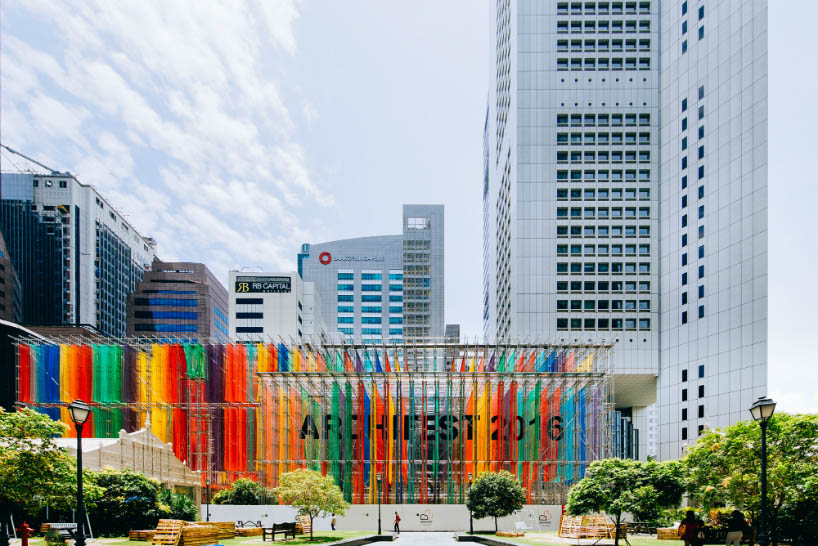
DP Architects' illusionary, techno-coloured Pavilion presented at Archifest 2016, which officially held between September 23-October 9, 2016 in Singapore. Drawing inspiration from the festival’s theme of ‘Exhale’, the design aimed to re-examine the often breathless pace of life associated with a dense city.
DP Architects’ gigantic, technicolour inhabitable urban sculpture played on the interaction of primary colours which overlapped to produce a vibrant spectrum of secondary and tertiary colours that induced visitors to forget about the stressful city life and ‘Exhale’.
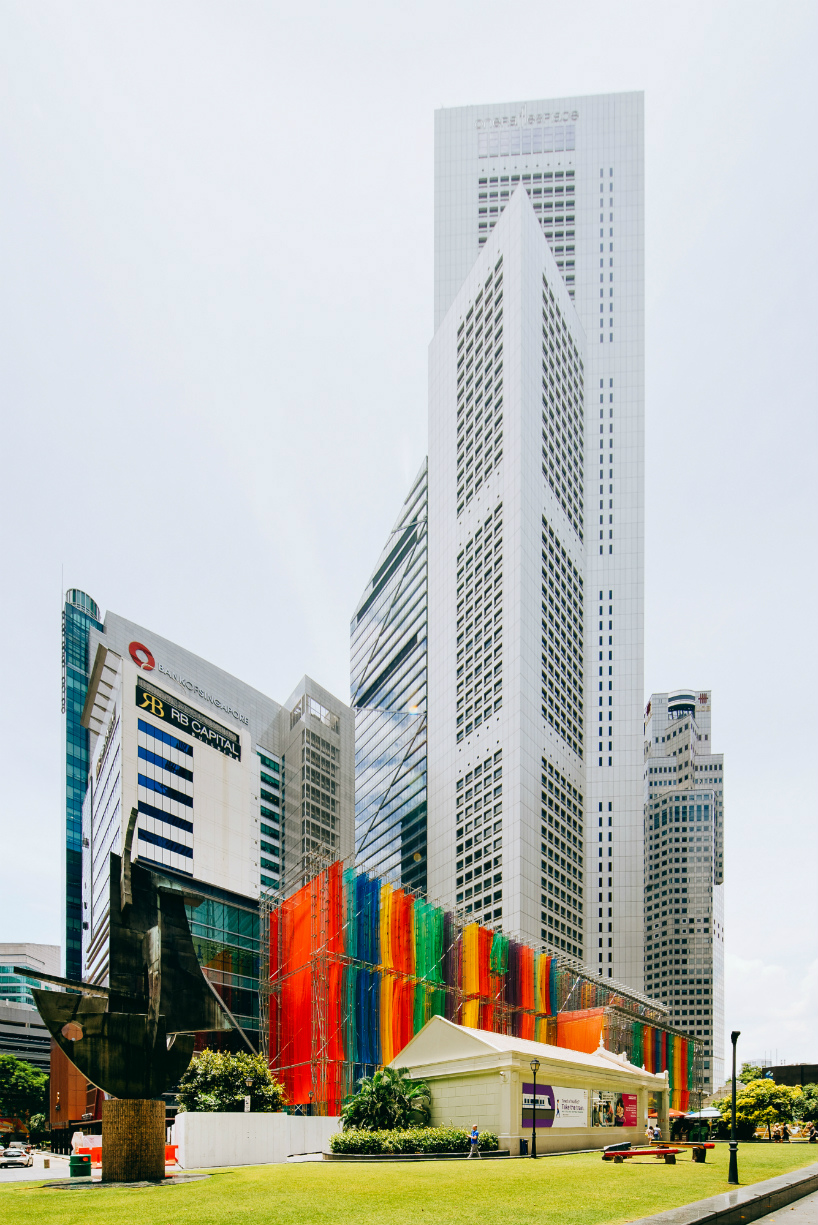
Image © Teo Zi Tong
DP Architects entirely used construction site materials to create this giant urban sculpture, and the design sought to playfully refresh the city by injecting vibrant swathes of colour in public space by way of a psychedelic pavilion. The pavilion’s character was built on nuance and mutability: colours faded, shifted, saturated and interacted as one moved in and around the space.
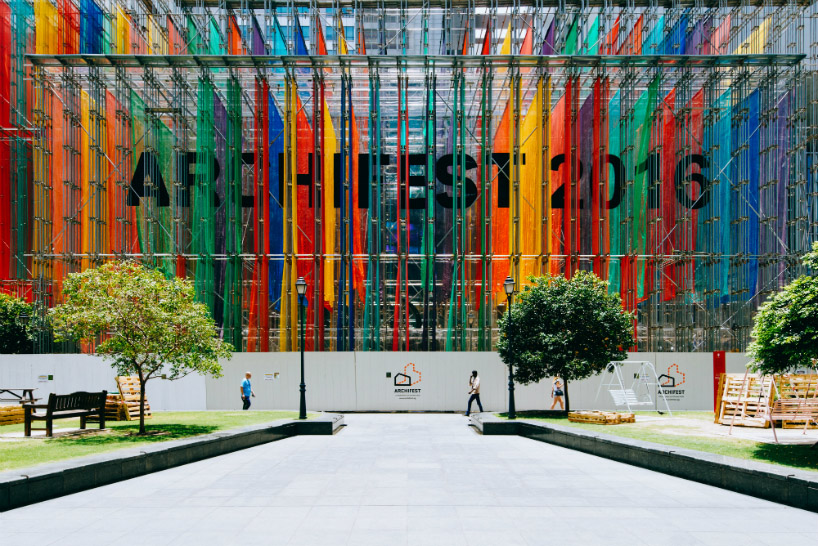
Image © Teo Zi Tong
The pavilion presented a wider spectrum of colour than was currently found in that specific locale and this invited visitors to focus, reflect and appreciate their surroundings with a fresh eye. Humans have an automatic response to colour; the psychology behind it shows that people’s moods can be influenced by different hues as the different electromagnetic energies and wavelengths of colour elicit not just psychological but even physiological responses.

Image © Teo Zi Tong
The pavilion sought to visually stimulate the senses and ‘make its visitors come alive’ by evoking automatic psychological responses to the pavilion’s vibrant colour spectrum. Besides that, primary colour layers interact lightly to create secondary colours – this layered shift evokes the immediacy of the third dimension, which is essential to this property of change, while gradations of light and colour shifting with one’s changing viewpoint and focus, this creates an intimate, visceral real-time relationship between the Pavilion and its viewer.
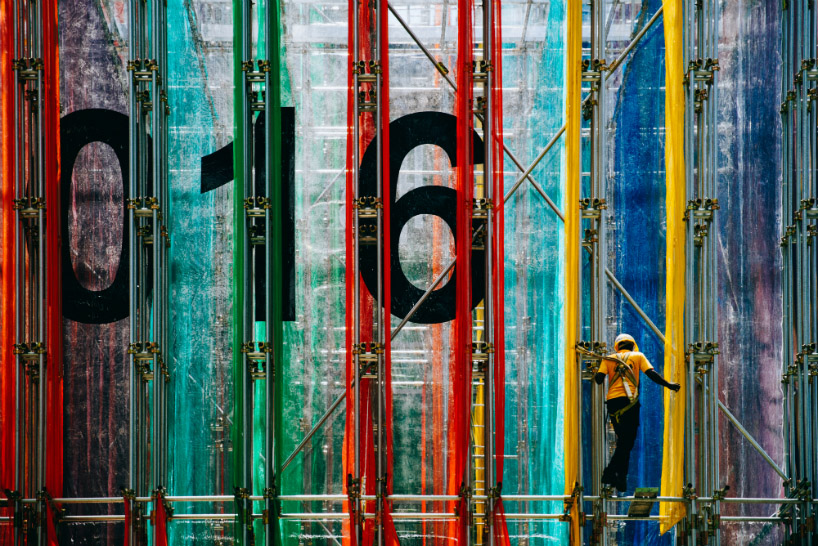
Image © Teo Zi Tong
The studio worked with contractor Shanghai Chong Kee Furniture & Construction Pte Ltd, the pavilion was designed with a smart approach to zero waste. The steel scaffolding came from the contractor’s existing stock and will be reused on other construction sites after the pavilion is dismantled, while the netting is safety netting that will have an afterlife in various construction sites after the festival ends.

Image © Teo Zi Tong
The pavilion was further intended to provoke curiosity and interest, where its height and vibrancy of colour were meant to stand in counterpoint to its surroundings. Raffles Place is an urbanised environment, densely built, hard-edged, polished, monochromatic (not in the strict scientific definition but qualitatively to mean fewer, limited colours, muted).
In contrast the pavilion was soft-edged, visually light, polychromatic, ephemeral (a transient entity with a two week lifespan).

Image © Teo Zi Tong
The pavilion was composed of multiple layers of netting to achieve overall density in colour and form. The saturation of colour was calibrated by choice of the netting’s density and closer spacing between the layers of netting. The Archifest Pavilion was installed at Raffles Place Park and was open to the public from 23 September to 9 October 2016.
The two-week long festival was anchored at the pavilion, featuring exhibitions, conversations, Architours and other fringe events.
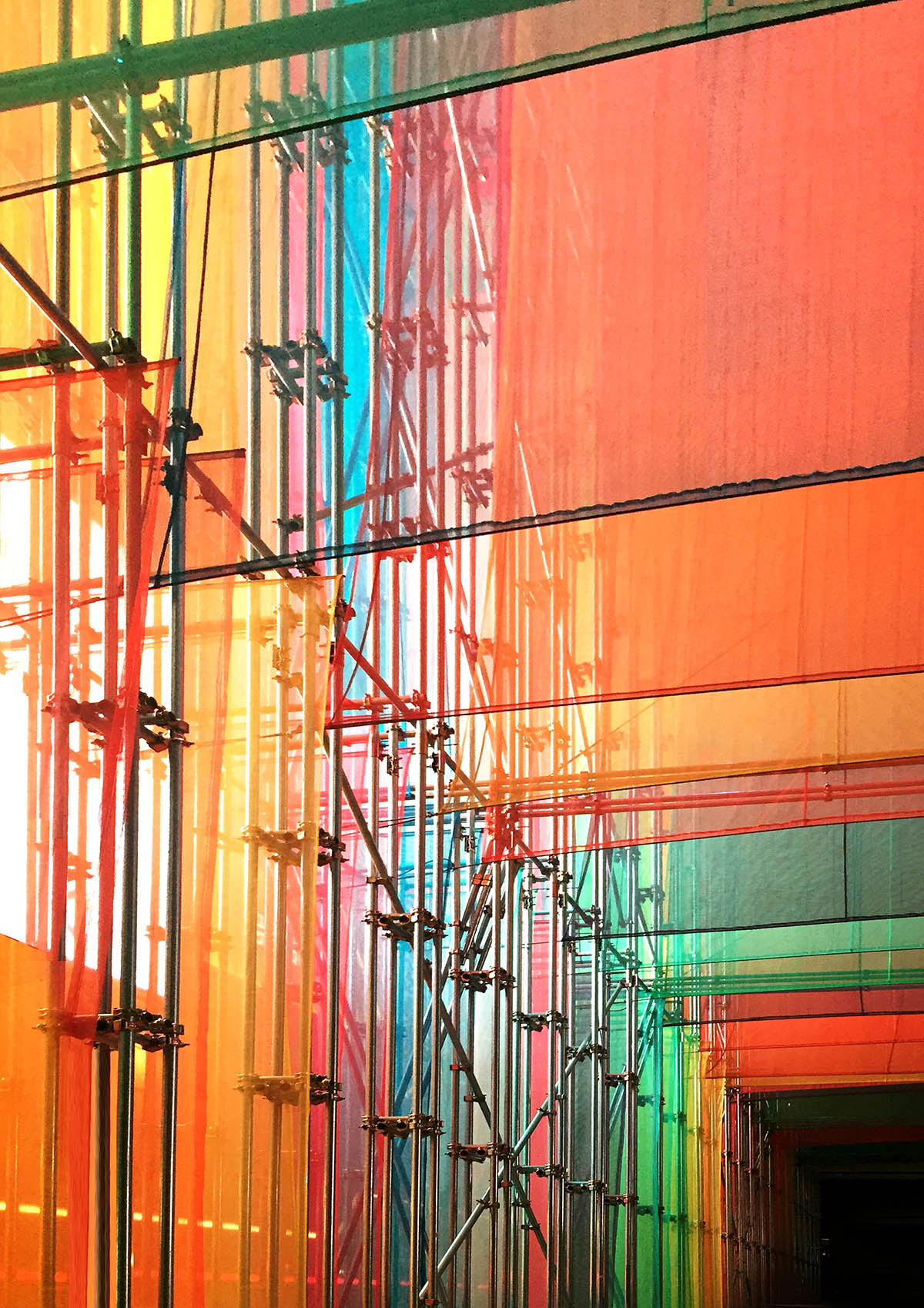
Image © Teo Zi Tong
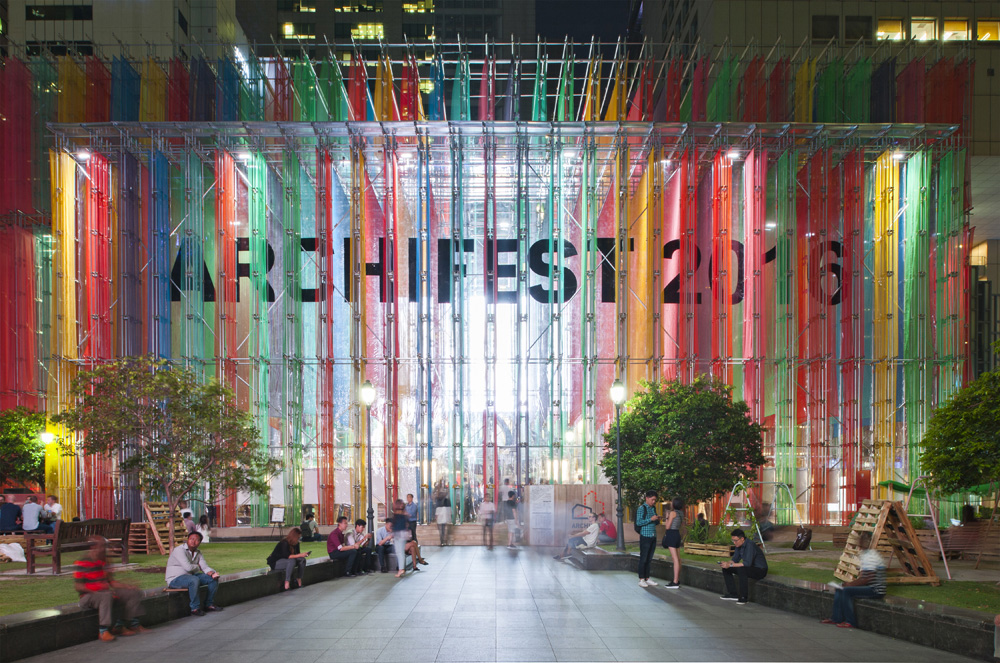
Image © DP Architects
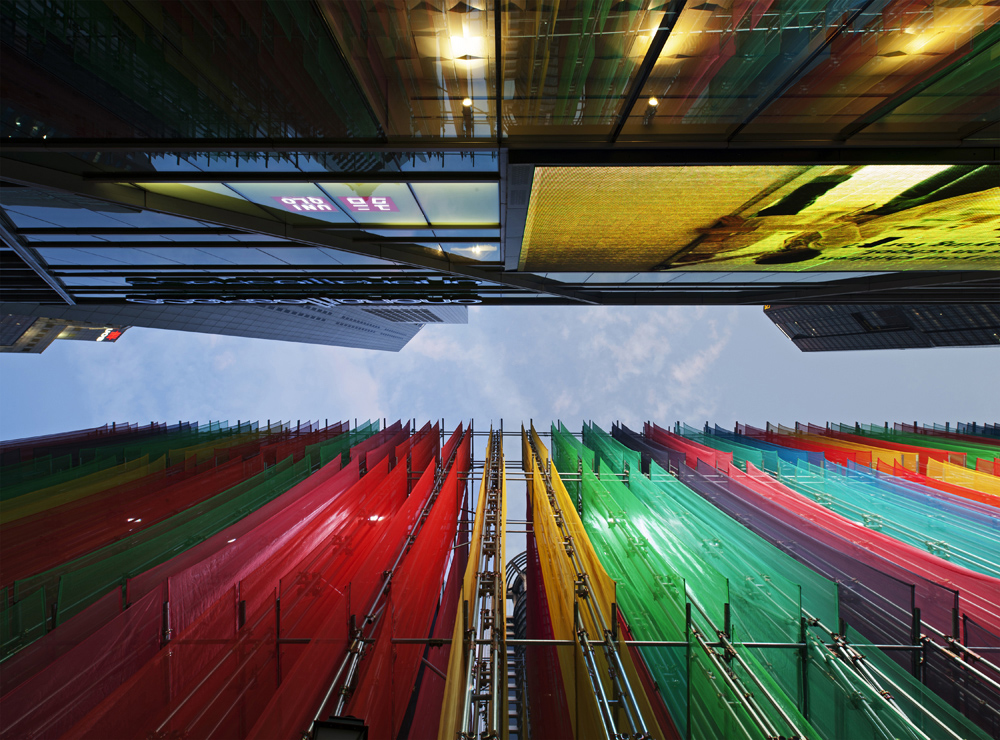
Image © DP Architects
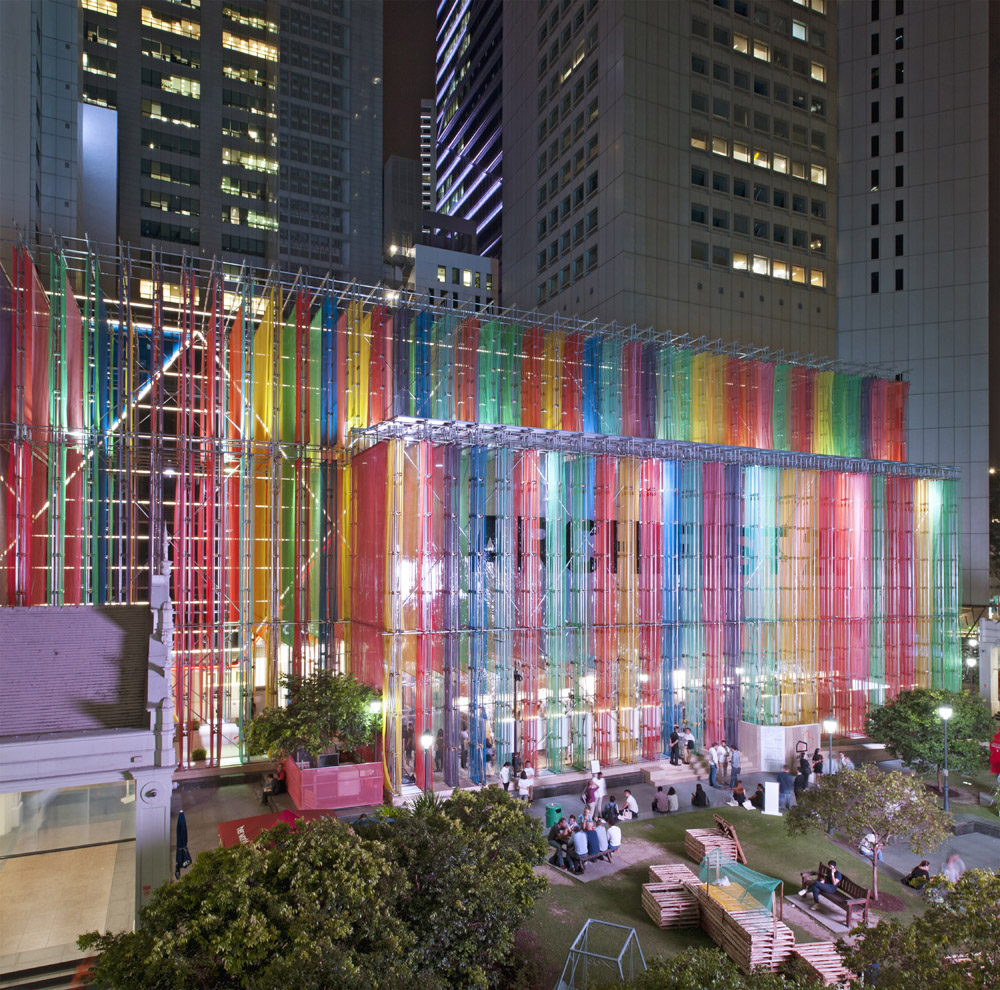
Image © DP Architects
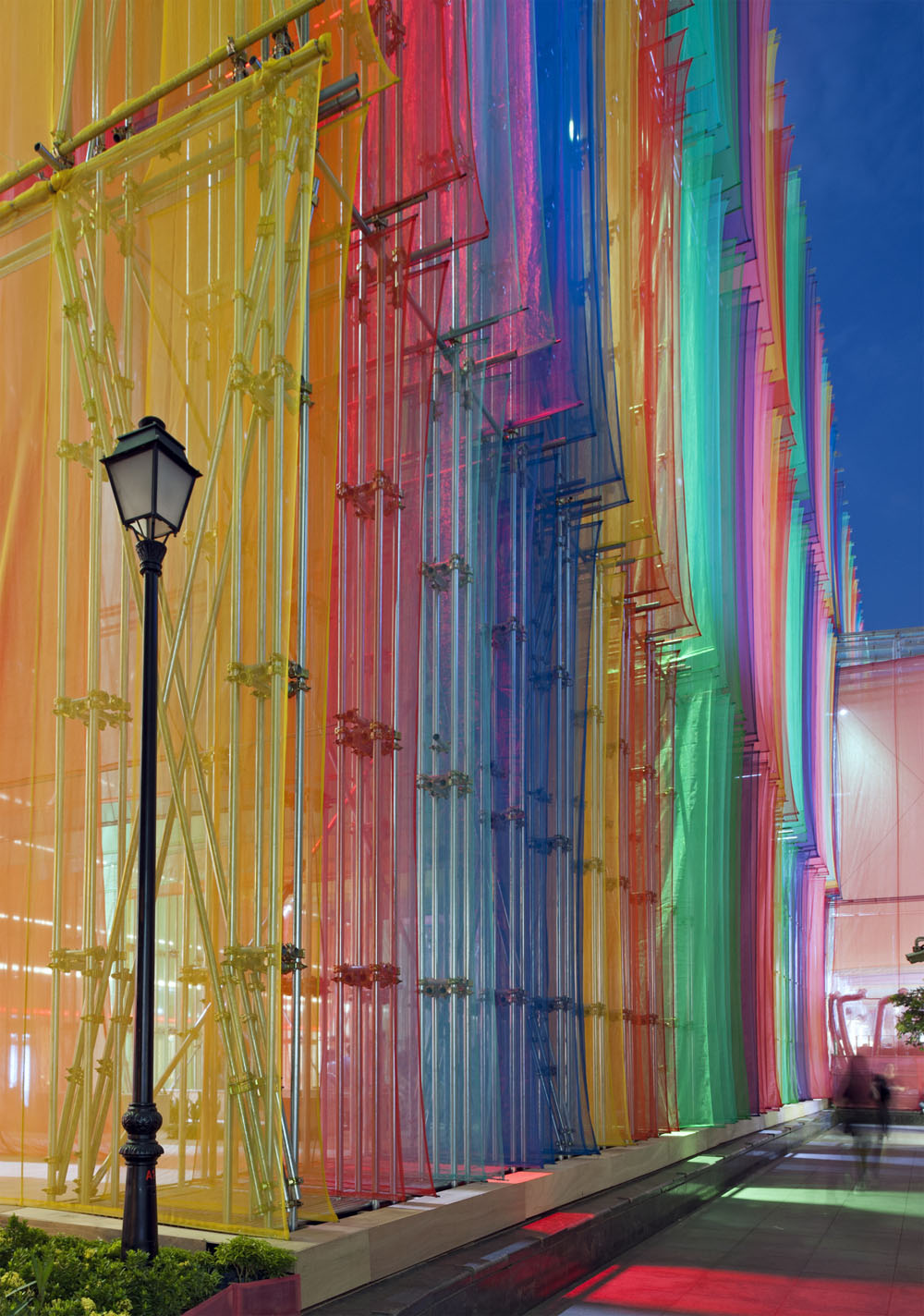
Image © DP Architects

Image © DP Architects

Coloured plan. Image © DP Architects
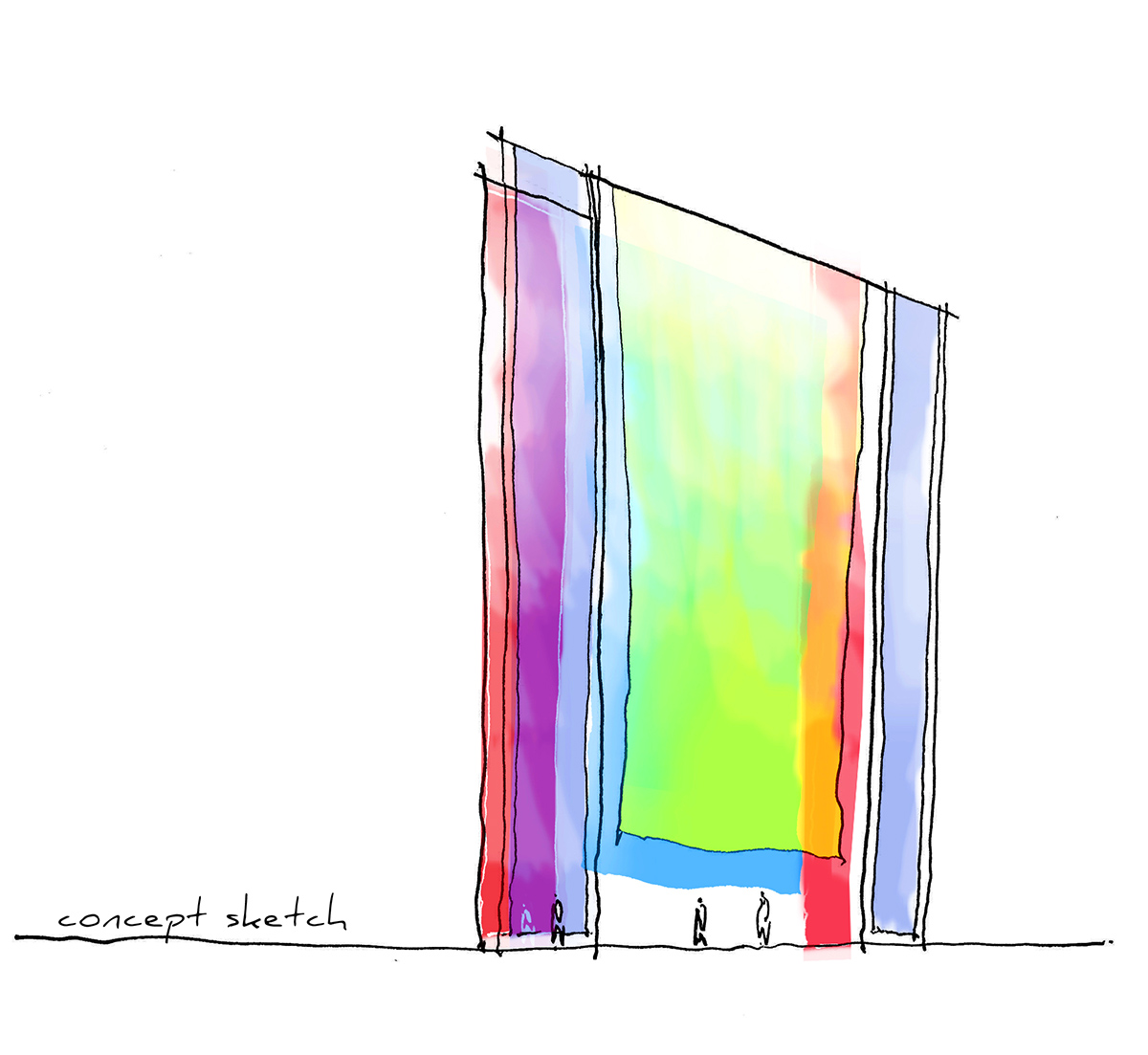
Concept sketch. Image © DP Architects
> via DP Architects